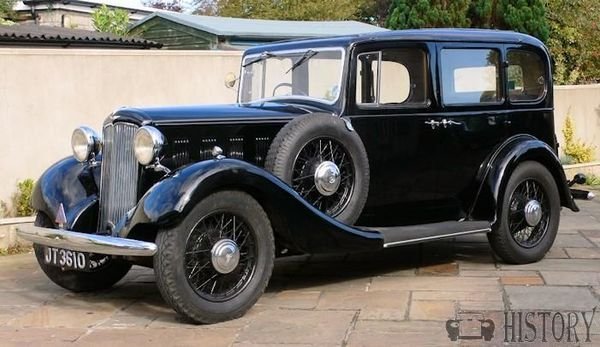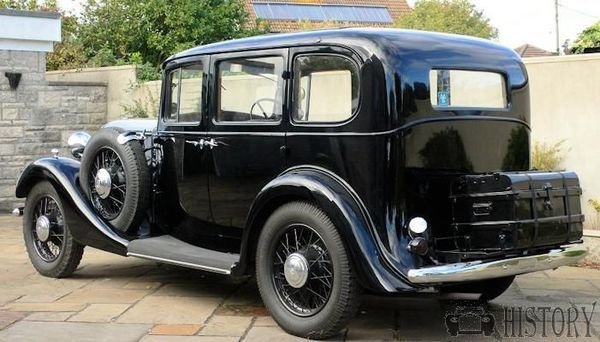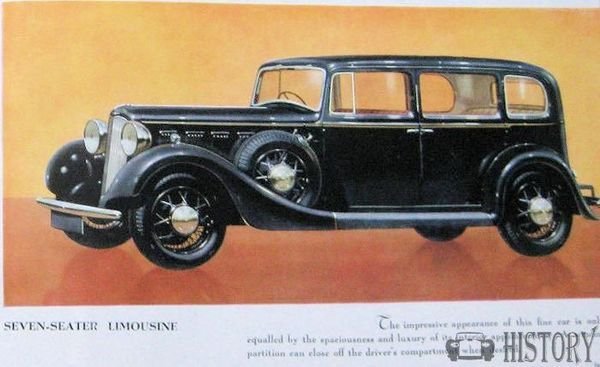Hillman Twenty-70 & 16 h.p.
| 1934 to 1935 | |
|---|---|
 |
|
| Manufacturer | Hillman Motor Car Co Ltd |
| Production | 1934–1935 "16hp" 1934–1935 "20/70" approx 4100 produced |
| Body and chassis | |
| Body style | 4dr Family Saloon (16hp & 20/70); 4dr Saloon Deluxe (16hp & 20/70); 4dr Family Tourer (16hp & 20/70); 4dr Sports Saloon (16hp & 20/70); 4dr Foursome Drop Head Coupe (16hp & 20/70); 4dr 7-seater Saloon (20/70 only); 4dr 7-seater Limousine (20/70 only); 4dr 7-seater Landaulette (20/70 only) |
| Powertrain | |
| Engine | 2110 cc 15.90 hp/50 bhp ("16hp" model); 2810 cc 20.90 hp/68 bhp("20/70" model) |
| Dimensions | |
| Wheelbase |
"16hp" & "20/70" saloons 111 in (2,800 mm) "20/70" 7-seaters 126 in (3,200 mm) |
| Chronology | |
| Predecessor | Hillman Wizard 65 (1931-33) Hillman Wizard 75 (1931-33) |
| Successor | New Hillman "Sixteen" (1936-37) Hillman "Hawk" (1936-37) Hillman "80" (1936-38) |
The Hillman "Twenty-70" and the “16 h.p.” models were a duo of cars produce by the Hillman Motor Company of Coventry (then Part of the Rootes Group) between 1934 and 1935.
Origins
Between 1928 and 1935, Hillman Ltd of Coventry produced a range of Hillman models including the "14 h.p." (1925–30), the "20 h.p. “Straight 8” (1928-30), the "Vortic" (1930–32), the "Wizard" (1931–33), and the original "Minx" (1932–35). Hillman had merged with Humber Ltd in 1928 and in 1931 both companies came under the umbrella of the Rootes Group who were also responsible for the construction of vehicles for a number of other marques including Singer, Commer, Sunbeam-Talbot and Karrier.
Models for 1934/35
In 1934 and 1935, as well as producing the "Minx", Hillman also manufactured a duo of larger 6 cylinder side-valve luxury saloon cars which consisted of the Hillman "16hp" and the Hillman "20/70" Hillman advertised the cars as having "Cushioned Power" mounts which helped stop vibration through the engine and gearbox and described their cars as being “built with a margin throughout”. These two models superseded the older Hillman "Wizard 65" (1931–33) and "Wizard 75" (1931-33) models however they drew on some of the features and engine designs of the earlier Hillman Wizards and also those of the luxury Humber cars, including the Humber 12, 16/50, Snipe and Pullman, that were also being built in Coventry at that time. This was an attempt by Hillman Ltd to enter the luxury car market and also added to their "bread and butter" mid-range model, the Hillman "Minx" (1932-1935), which probably used some of the components and parts found on the larger models.

Engines, seating and brakes
The Hillman "16hp" had a 2110 cc 15.90 hp side valve straight-six engine whilst the "20/70" had larger 2810 cc 20.9 hp engines. The "16hp" and “20/70” saloons were five seaters with bucket seats at the front and a folding armrest dividing a bench seat at the rear whilst the a longer wheelbased (10 ft 6ins) "20/70" saloons, limousines & landaulettes were seven seaters (two of which folded down). Some "20/70"' 7-seater’s had a partition between the chauffeur/driver and passenger compartment. All these vehicles had Bendix "Duo Servo" brakes, which used rod and cable linkages and operated on all four wheels via both the foot pedal and the handbrake lever.
Production
About (citation required) Hillman "16hp"s were built between 1934-35 whereas around 4100 Hillman "20/70"s were built during the same period. These models were produced as family saloons, deluxe saloons and 7-seater limousines with a small number of each model being produced as sports tourers, cabriolets, coupes and 7-seater landaulettes, the bodywork being converted by designers Thrupp & Maberly.
Survivors
Only a few examples of each model still exist in the UK today. Some of these vehicles were exported throughout the world, including Argentina, Australia, Greece and New Zealand where a number of "20/70"'s also still survive.


